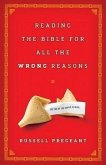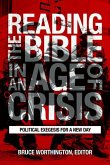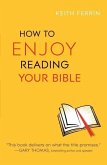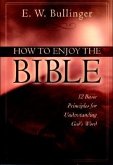"Reading the Bible" aims to provide a comprehensive, readable, and accessible guide to the diverse methods of biblical interpretation. The book falls into two parts. Part One 'What is Biblical Interpretation?' deals with basic issues concerning the interpretation of texts. What is interpretation? How do we understand any form of communication? What does 'meaning' mean, what does it mean for a text to have meaning, and how do we identify its meaning? Part One of the book also discusses the role of 'preunderstanding', i.e., the way our cultural background and personal interests affects the way we read texts. Attention is paid to the problem of cultural and temporal time-gap. How can we make sense of texts written in different cultures and epochs from our own? How can ancient texts be made relevant and meaningful for people living in the early twenty-first century? A further concern in this chapter is to introduce readers to such technical terms such as 'hermeneutics, ' 'exegesis' and 'eisegesis, ' 'semiotics, ' and diachronic and synchronic approaches to the interpretation of texts. Part Two, which forms the bulk of the book, provides a description of the main theories of biblical interpretation. Each chapter is divided into the following sections: definition, presuppositions, a brief history of the method, the principles of the method, and evaluation. There then follows a section entitled 'The (Respective) Method in Action', which provides examples of the practical application of each method to the same two Old Testament and New Testament texts (Gen. 2.4b-3.24; Matt. 15.21-28). By seeing the different results that arise from applying the various methods to the same two texts, readers will gain a clear idea of how a particular method works and how it is distinct from other methods.
Hinweis: Dieser Artikel kann nur an eine deutsche Lieferadresse ausgeliefert werden.
Hinweis: Dieser Artikel kann nur an eine deutsche Lieferadresse ausgeliefert werden.








